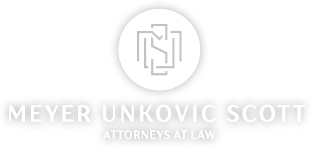By June F. Swanson
A recent decision from the PA Commonwealth Court (A Pocono Country Place Prop. Owners Ass’n v. Kowalski, 2018 Pa. Commw. LEXIS 159) should prompt anyone who serves on a nonprofit board to revisit the organization’s bylaws regarding the removal of directors. Bylaws should provide a roadmap for an organization’s actions that is easy to follow, and avoids distractions from the fulfillment of the organization’s purpose. The facts of this case show the difficulty the board of a nonprofit corporation can have in seeking court approval to remove a director.
Within a few weeks of being elected by the members to serve as a director of the A Pocono Country Place Property Owners Association (POA), Kowalski was sending derogatory emails characterizing certain female directors as “cunning and conniving,” “vindictive and spiteful,” and “incoherent.” Kowalski, one of two men on the nine-person board, also suggested that there were too many women on the board. In another scenario, he advised one of the female directors to change her dinner order because her selection would be too fattening.
The board censured Kowalski several times and ordered him to take formal sensitivity training. After the training, Kowalski continued his attacks. He compared other directors to Nazis and called them “sociopathic in nature,” referred to the other male director as “arrogant and abusive,” and called certain female directors “poster children for…dysfunctional behavior.”
After several months of this behavior, the board voted to suspend him and petitioned the Monroe County Court of Common Pleas to remove him as a director. However, the bylaws of the POA provided that directors could only be removed in specific circumstances, including ways permitted in Section 5726 of the Pennsylvania Nonprofit Corporation Law (PNCL); by a vote of a two-thirds majority of the members at a special meeting of the members called for that purpose; or if the director is declared of unsound mind, convicted of a felony, fails to accept office or fails to attend either three consecutive board meetings in a 12-month period or six inconsecutive meetings in a 12-month period.
Section 5726 of the PNCL states that unless otherwise stated in the bylaws, a director can only be removed by:
- A vote of the members for any reason or no reason.
- A vote of the board of directors based upon a judicial declaration of incompetence, criminal conviction punishable by more than a year in prison or for other proper cause.
- A court “in the case of fraudulent or dishonest acts, or gross abuse of authority or discretion with reference to the corporation, or for other proper cause.”
The trial court declined to remove Kowalski stating that it could do so only with a finding of fraud, dishonesty, financial misconduct or gross abuse of authority. Finding none of those situations in this case, the court decided that “removing a director for incivility would penalize expression of opinion” and interfere with the right of the members of the POA to elect its directors.
On appeal by the POA, the Commonwealth Court noted that Kowalski repeatedly acted “boorishly and uncivilly” toward other members of the board, but that under Section 5726 of the PNCL, his behavior did not rise to the level required for judicial intervention in the nonprofit’s management.
The Court found that a director could only be removed under drastic circumstances, finding that judicial removal under Section 5726(c) requires a showing of fraud, dishonesty or other illegal conduct. What it didn’t provide was an opinion about whether the board or the members of the POA could have removed Kowalski rather than seeking court approval. Given these facts it is certainly reasonable to conclude that the “proper cause” threshold for board removal could have been met.
This case leaves several lessons to be learned. First, most well-drafted bylaws state that a director can be removed by majority vote of the board for any reason or no reason. Bylaws that indicate a director can be removed for “proper cause” should be avoided, as they can lead to different interpretations and debate of what “proper cause” may be. Additionally, bylaws tied to a director missing a set number of board meetings should also be avoided. A director can easily attend required meetings and engage in troublesome behavior in meetings or between meetings.
Above all, be sure to carefully review your organization’s bylaws to confirm the right to remove directors is flexible and accommodates a number of circumstances. A board’s role in any organization is to make meaningful progress on behalf of its constituents. Any individual that impedes that progress should be dismissed as quickly as possible.
For more information about this or any other nonprofit governance or legal matter, please contact June Swanson. She can be reached at [email protected] or 412.456.2824.
This material is for informational purposes only. It is not and should not be solely relied on as legal advice in dealing with any specific situation.

